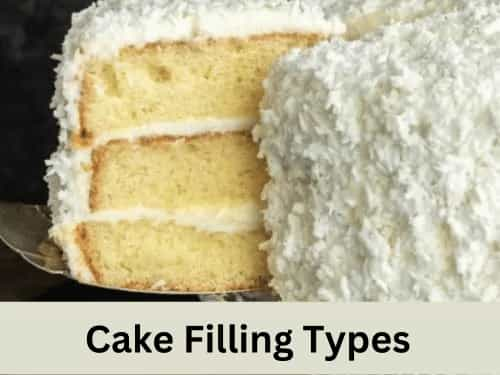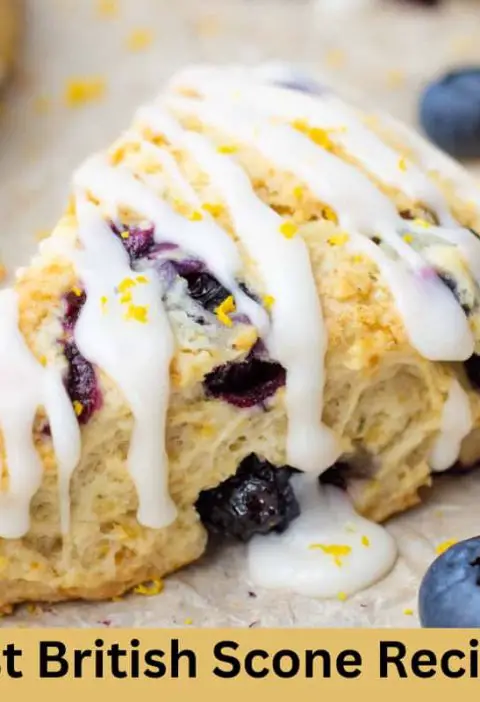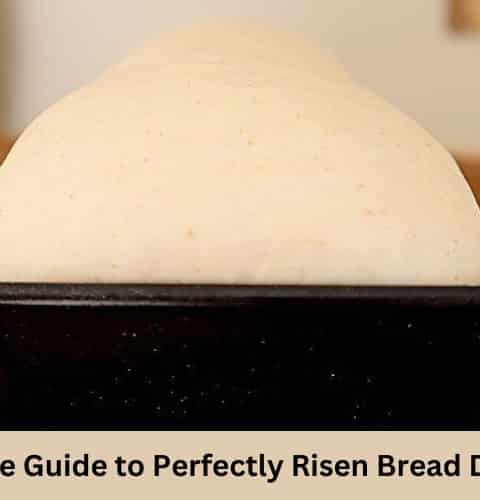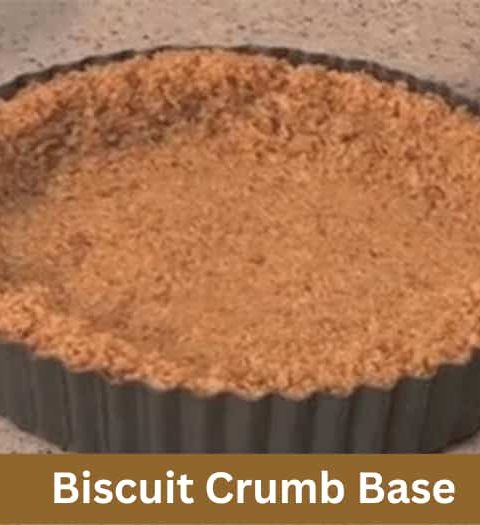For baking aficionados, the essence of a cake often lies in its filling. Not only does it infuse moisture, flavor, and texture into the cake, but it also enhances its overall appeal. With a myriad of filling options at your disposal, the decision can be daunting.
In this article, I will guide you through 10 types of cake fillings that you can use for your next baking project. Whether you prefer something sweet, tangy, fruity, or creamy, there is a cake filling for you.
Let’s get started!
Buttercream Filling
A timeless favorite, buttercream boasts a rich, creamy texture complemented by its delightful sweetness.
This versatile filling resonates with numerous cake flavors, spanning from staples like chocolate and vanilla to the eclectic lemon and coconut. Created by melding butter with powdered sugar and often enriched with vanilla extract, buttercream offers a creamy, spreadable texture that infuses sweetness. Moreover, its flexibility allows for color customizations, aligning with any festivity or theme.
A standout trait of buttercream is its robustness, gracefully bearing the load of multi-tiered cakes. Its adaptability shines in various decorative endeavors, be it piping or intricate designs. Among its variations, Swiss, Italian, and French buttercream stand out, each bearing unique flavor and texture notes. For instance, the delicate texture of Swiss and Italian buttercream stems from the combination of sugar syrup and egg whites.
For any cake, buttercream remains a trusted and delightful choice. Renowned for its creamy texture and sweetness, it holds a special place in the hearts of professional bakers and home enthusiasts alike. From birthday celebrations to wedding extravaganzas or a simple personal indulgence, buttercream never disappoints.
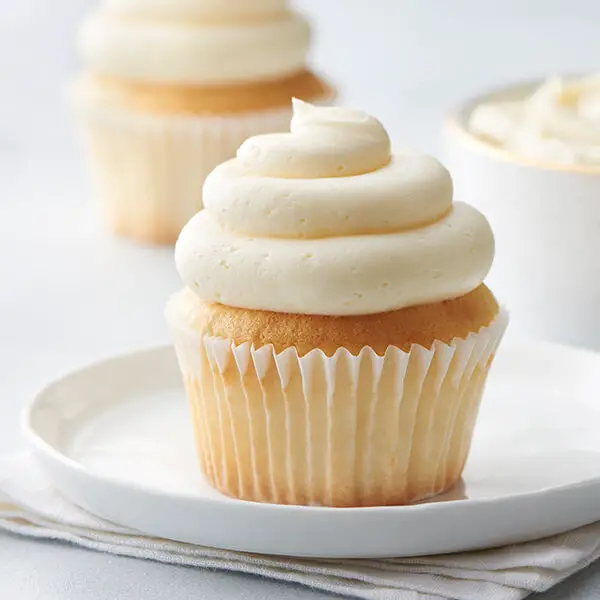
Cream Cheese Filling
For those craving a tangy edge, cream cheese filling emerges as a favorite. Its distinguishable creamy texture and subtle tartness offer a balanced counter to the cake’s sweetness. A harmonious blend of cream cheese, either powdered or castor sugar, and a hint of vanilla extract results in this creamy delight. It especially shines when paired with flavors like red velvet, carrot, pumpkin, or chocolate.
Given its rich consistency, it’s an apt choice for layered cakes. Those seeking a subtler sweetness will appreciate the tang of cream cheese which counterbalances the cake’s sugary notes.
Diverse flavors can be incorporated into the cream cheese filling. A zest or splash of lemon intensifies its tang, while a sprinkle of cocoa powder bestows a chocolatey essence.
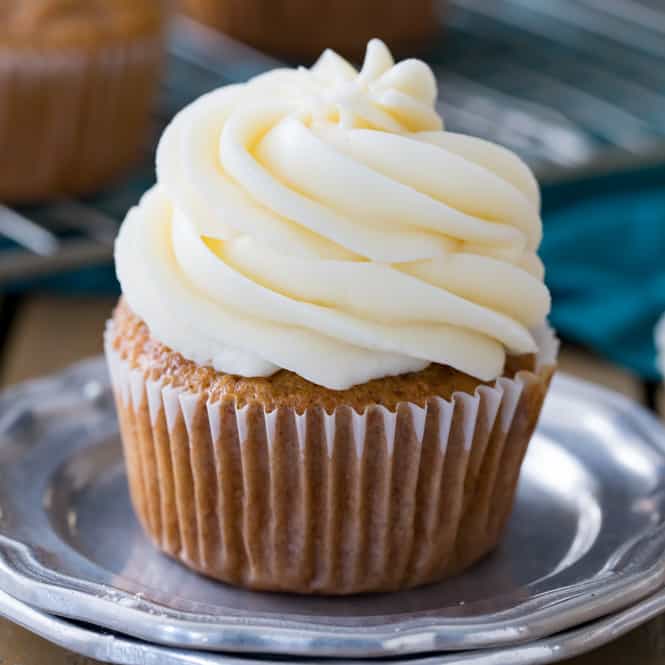
Vanilla Custard Cake Filling
The nostalgic allure of vanilla custard filling adds depth and richness to any cake. Custard, a luscious blend of milk or cream, eggs, sugar, and vanilla, achieves its creaminess through gentle heating. This filling can serve as a foundational base, embracing a variety of flavors or ingredients.
The inherent simplicity of vanilla custard makes it a universal favorite, blending seamlessly with fillings like fruit jams or chocolate ganache. It imparts moisture and flavor without overwhelming the cake’s inherent taste. Particularly, denser cakes like sponges or pounds embrace it well.
For convenience, prepare the vanilla custard filling in advance and refrigerate. Ensure it’s well-covered to ward off any surface skin.
Related: Try These Mary Berry Cakes Recipes
- Lemon Courgette Cake Mary Berry
- Mary Berry Coconut Cake
- Mary Berry Boiled Fruit Cake
- Mary Berry Blueberry Loaf Cake
- Mars Bar Cake Mary Berry
- Mary Berry Lemon Shortbread Biscuits
- Mary Berry Date and Banana Cake
Raspberry Cake Filling
For a splash of color and an invigorating taste, raspberry cake filling is a stellar choice. The sweetness and tartness of raspberries beautifully complement a range of cakes, be it chocolate, vanilla, lemon, or almond. Its vibrant ruby hue presents a visual treat against a pristine white cake backdrop.
Crafting this filling is straightforward, employing fresh or frozen raspberries, sugar, cornstarch, lemon juice, and water. Cooking raspberries with sugar and water until they release their juices, followed by a cornstarch and lemon juice infusion, results in a glossy, textured delight.
Versatility is at the heart of raspberry filling. Use it singularly, mix it with whipped cream or cream cheese for added richness, or even as a topping for cheesecakes, cupcakes, or ice cream.
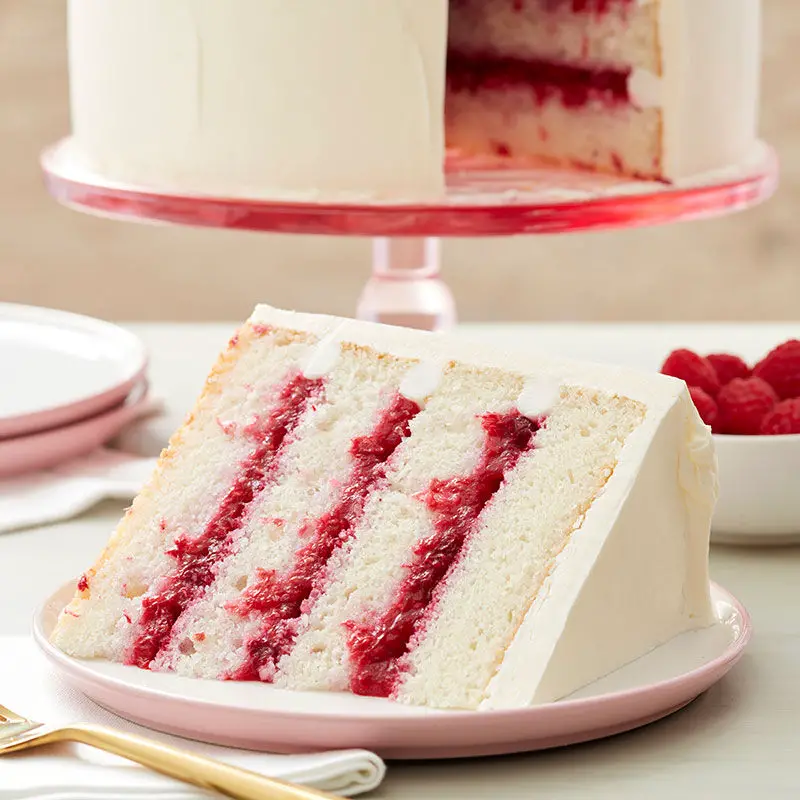
Strawberry Filling for Cakes, Tarts, and Desserts
Strawberries, with their juicy sweetness, find a special place in the hearts of dessert enthusiasts. Their universal appeal makes them a sought-after filling for a gamut of confections – from cakes and tarts to diverse desserts. Complementing an array of flavors like chocolate, vanilla, lemon, and coconut, strawberries impart a rich red hue that elevates the visual appeal of your creations.
Crafting this filling is reminiscent of the raspberry variant. A gentle simmer of strawberries with sugar and water until they soften, followed by a thickness rendered by cornstarch and lemon juice, culminates in a glossy, aromatic blend.
This filling lends itself beautifully as a singular layer or when combined with whipped cream or mascarpone for an added layer of luxury. Its versatility also shines when used as a topping for pies, pastries, or a dollop of yogurt.

Orange Curd Cake Filling
Introduce a zesty flair to your cakes with the citrusy exuberance of orange curd. A delightful blend of orange juice, zest, sugar, eggs, and butter, the curd is a melody of tangy and sweet notes that contrast the cake’s richness.
Creation entails a gentle whisk of eggs and sugar, infused progressively with orange juice and zest. A low-heat simmer, with consistent stirring, results in a creamy texture, which is then enriched by melted butter.
This zesty concoction can stand alone or find companionship in whipped cream or chocolate ganache for a multifaceted flavor profile. It also gracefully drapes scones, muffins, or pancakes as a zesty topping.
Lemon Curd Cake Filling
In the realm of citrusy delights, lemon curd offers a tangy freshness that invigorates cakes. The process and ingredients echo the orange variant, substituting orange with lemon. The resultant tart and sweet symphony complements flavors like vanilla, coconut, or blueberry effortlessly.
Following a similar creation method, where eggs and sugar are whisked, infused with lemon juice and zest, and simmered to creamy perfection, it’s then harmonized with butter.
Whether layered solo or paired with whipped cream or cream cheese, it introduces a refreshing twist. Moreover, it serves as an exemplary topping for cakes, pies, or tarts.
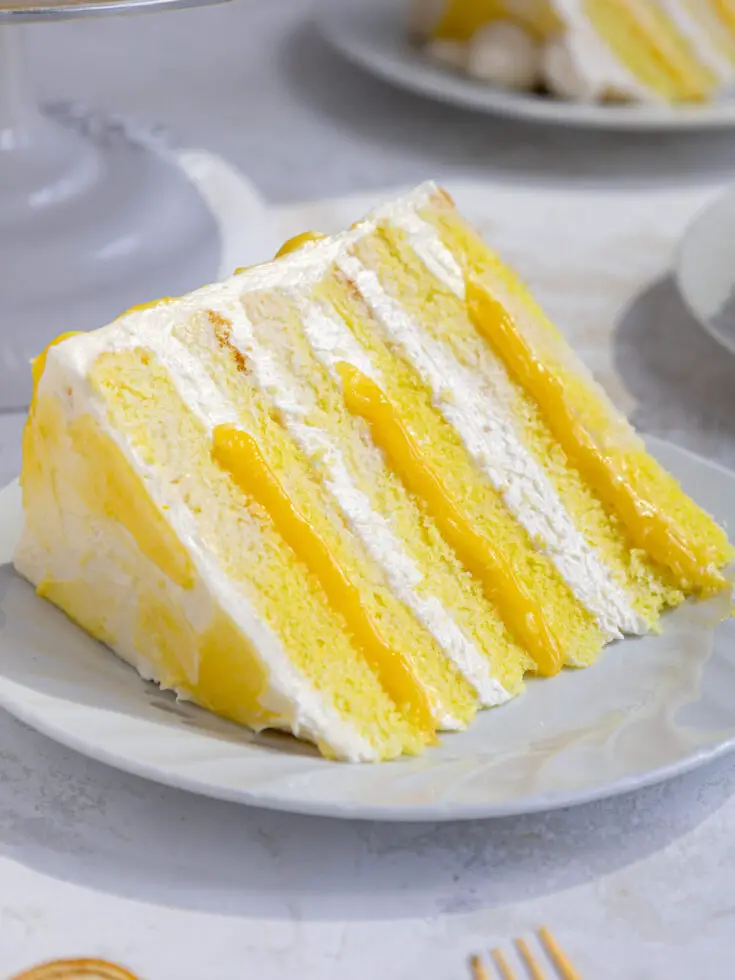
Chocolate Ganache Cake Filling
For those seeking a rich indulgence, chocolate ganache is the epitome of luxury. A harmony of molten chocolate and cream, it boasts a silken texture and deep chocolate notes that heighten the allure of any cake.
To manifest this velvety delight, premium chocolate is finely chopped and nestled in a bowl, awaiting a pour of boiling cream. A brief pause followed by a whisk melds them into a glossy union.
Chocolate ganache is versatile; it can shine alone, be blended with whipped cream or peanut butter for nuanced flavors, or even serve as a lavish frosting for cakes, cupcakes, or brownies.
Peanut Butter Cake Filling
Delve into the rich and creamy realm of peanut butter cake filling. Revered for its luscious, velvety taste, peanut butter stands as a celebrated ingredient that melds seamlessly with myriad cake flavors like chocolate, banana, and even carrot. Its robust consistency ensures it stays put, gracing your cake layers without sliding off.
Crafting this filling is simplicity personified. Start with your preference for creamy or crunchy peanut butter, blend with powdered sugar, and introduce milk gradually, achieving a consistency that’s both smooth and airy. Its finish on the palate is a harmonious blend of nuttiness and sweetness.
Elevate its depth by pairing it with contrasting elements like chocolate ganache or jam, or let it star solo. Beyond cakes, this filling magnificently crowns cookies, bars, and cupcakes.
- Related: Tips to Improve Your Baking Skills
Caramel Cake Filling
Caramel cake filling is a sweet and sticky choice that adds a layer of caramel goodness to your cake. Caramel is a type of sugar that is cooked until it turns golden brown and develops a rich and complex flavor. Caramel can be used as a base for many other fillings by adding cream, butter, salt, or nuts to it.
Caramel cake filling is not difficult to make, but it requires some attention and care. You just need to cook granulated sugar in a saucepan over medium-high heat, stirring occasionally, until it melts and turns amber in color. Then you need to carefully add heavy cream and butter, stirring constantly, until smooth and creamy. Be careful not to burn yourself as the mixture will bubble up and splatter. You can also add salt or vanilla extract for more flavor.
Caramel cake filling can be used as a single layer or combined with other fillings such as whipped cream or cream cheese for more creaminess and lightness. You can also use caramel cake filling as a topping or drizzle for cakes, pies, or ice cream.
Coconut Cake Filling
Coconut cake filling is a tropical and refreshing choice that adds a layer of coconut flavor and texture to your cake. Coconut is one of the most versatile ingredients for cake fillings because it can be used in different forms such as shredded, flaked, creamed, or milked. Coconut has a mild and sweet taste that goes well with many cake flavors such as chocolate, vanilla, lemon, or pineapple.
Coconut cake filling is easy to make with coconut cream, powdered sugar, and shredded coconut. You just need to whip the coconut cream and powdered sugar together in a bowl until stiff peaks form and then fold in the shredded coconut. The result is a light and fluffy filling that has a coconut flavor and crunch.
Coconut cake filling can be used as a single layer or mixed with other fillings such as whipped cream or custard for more richness and smoothness. You can also use coconut cake filling as a frosting or filling for cupcakes, macaroons, or bars.
FAQs
How do I store cake fillings?
Cake fillings should be stored in an airtight container in the refrigerator for up to 3 days or in the freezer for up to 3 months. Before using them again, let them thaw at room temperature and whip them again if needed.
How do I choose the right cake filling for my cake?
The right cake filling depends on several factors such as the flavor, texture, color, theme, occasion, and preference of your cake. You should choose a cake filling that complements the flavor of your cake without overpowering it. You should also choose a cake filling that matches the texture of your cake without making it too dry or too soggy. You should also choose a cake filling that adds color and contrast to your cake without clashing with it. You should also choose a cake filling that suits the theme and occasion of your cake without being too casual or too formal. Finally, you should choose a cake filling that satisfies your preference without compromising the quality of your cake.
How do I apply cake fillings to my cake?
Cake fillings can be applied to your cake in different ways depending on the type and consistency of the filling.
Some of the most common ways are:
- Spreading: This is the simplest way to apply cake fillings to your cake. You just need to spread the filling evenly over the top of one layer of cake and then place another layer of cake on top of it. You can repeat this process until you have the desired number of layers. This method works well for fillings that are smooth and spreadable such as buttercream, cream cheese, or ganache.
- Piping: This is a more decorative way to apply cake fillings to your cake. You just need to fill a piping bag with the filling and then pipe it over the top of one layer of cake in a circular or spiral pattern. Then you need to place another layer of cake on top of it and press gently to spread the filling evenly. You can repeat this process until you have the desired number of layers. This method works well for fillings that are light and fluffy such as whipped cream, custard, or mousse.
- Cutting: This is a more advanced way to apply cake fillings to your cake. You just need to cut a hole in the center of one layer of cake and then scoop out some of the cake to create a cavity. Then you need to fill the cavity with the filling and then place another layer of cake on top of it. You can repeat this process until you have the desired number of layers. This method works well for fillings that are thick and chunky such as fruit jams, curds, or nuts.
Conclusion
Cake fillings are one of the most important aspects of baking cakes because they add moisture, flavor, texture, and color to your cakes. There are many types of cake fillings to choose from depending on your preference, occasion, and theme. Some of the most popular types of cake fillings are buttercream, cream cheese, custard, fruit jams, curds, ganache, peanut butter, caramel, and coconut. Each type of cake filling has its own characteristics, advantages, and disadvantages that you need to consider before using them.
Cake fillings are easy to make with simple ingredients and methods that you can find in any kitchen. You can also customize them by adding different flavors or ingredients to create your own unique combinations. Cake fillings can be used as single layers or paired with other fillings for more variety and contrast. You can also use cake fillings as toppings or fillings for other desserts such as pies, pastries, or ice cream.
Cake fillings are fun and creative ways to enhance your cakes and make them more delicious and appealing. Whether you are baking for yourself, your family, your friends, or your customers, you can always find a cake filling that suits your taste buds and needs.

